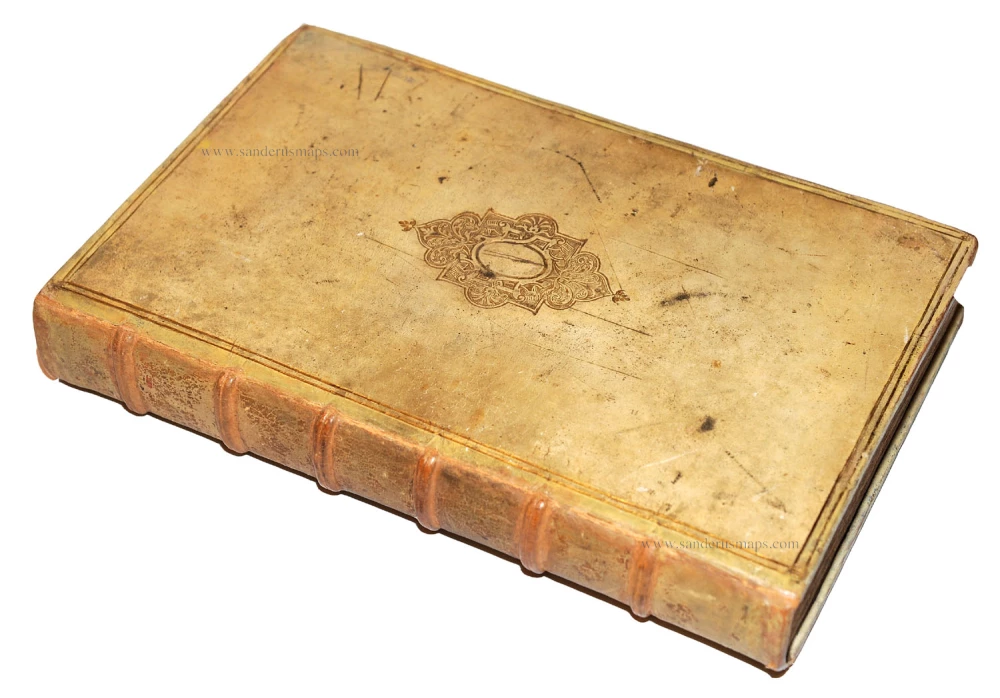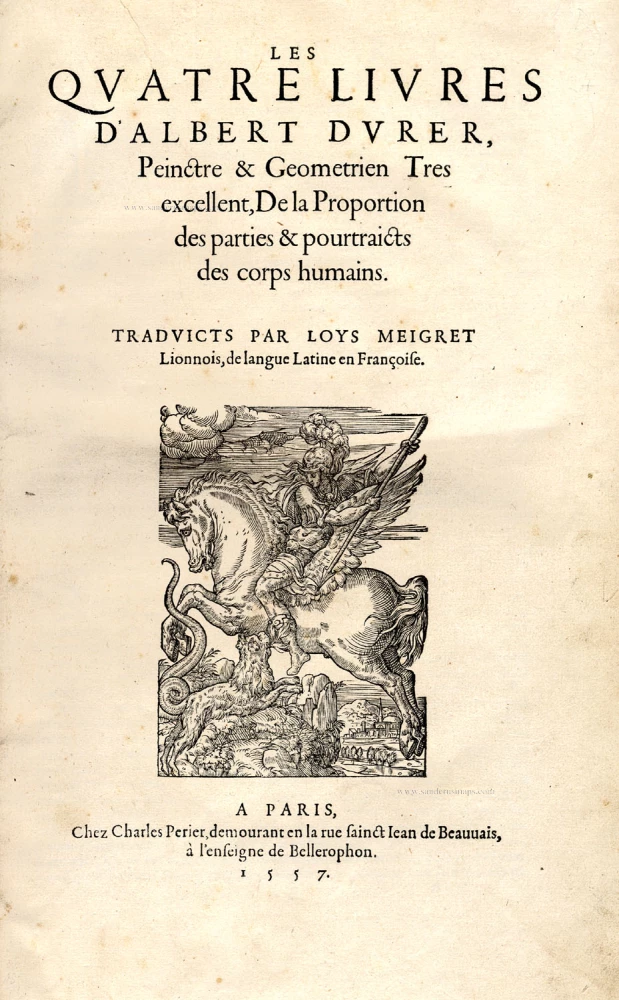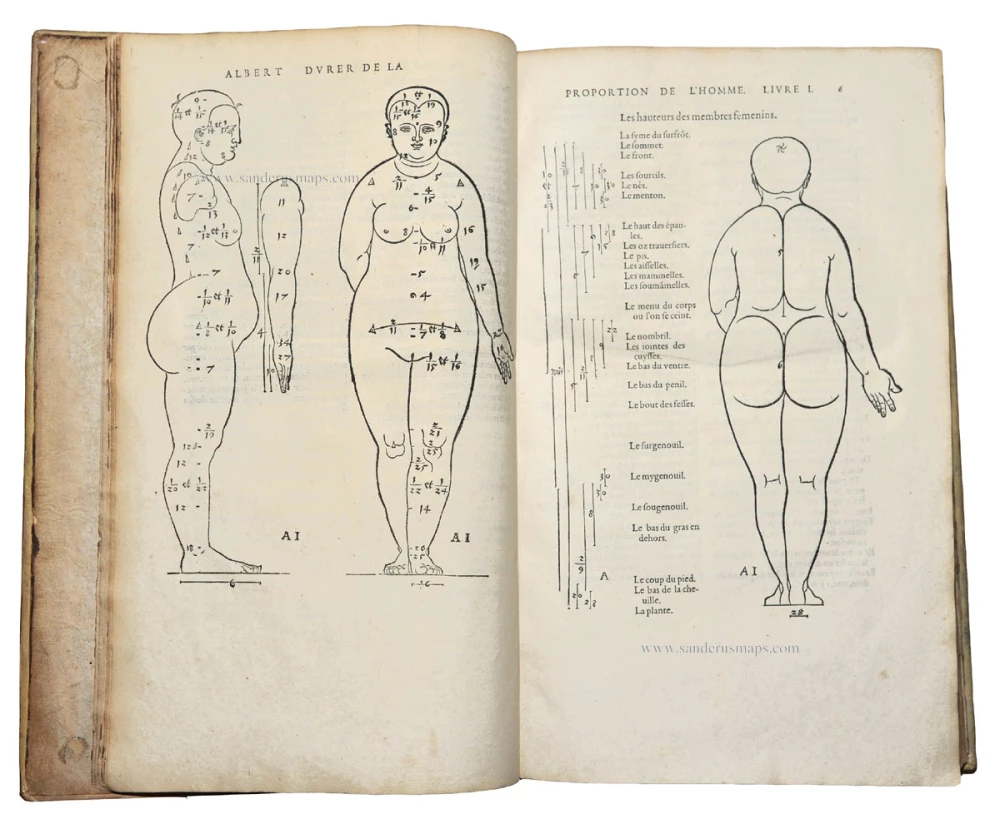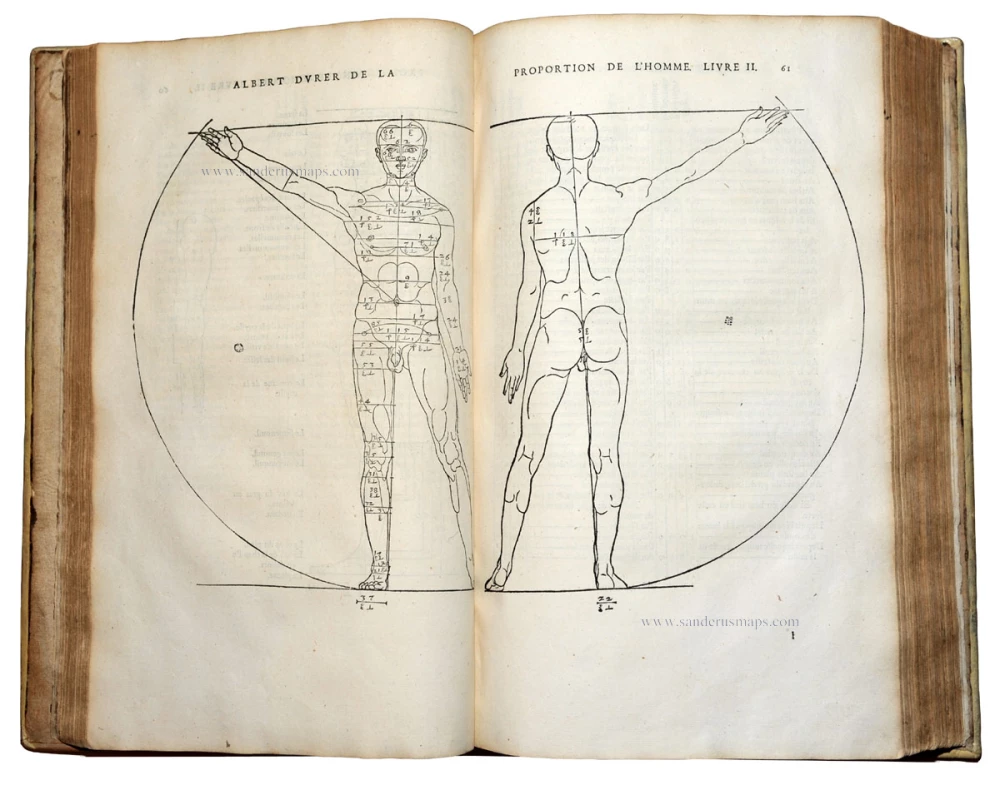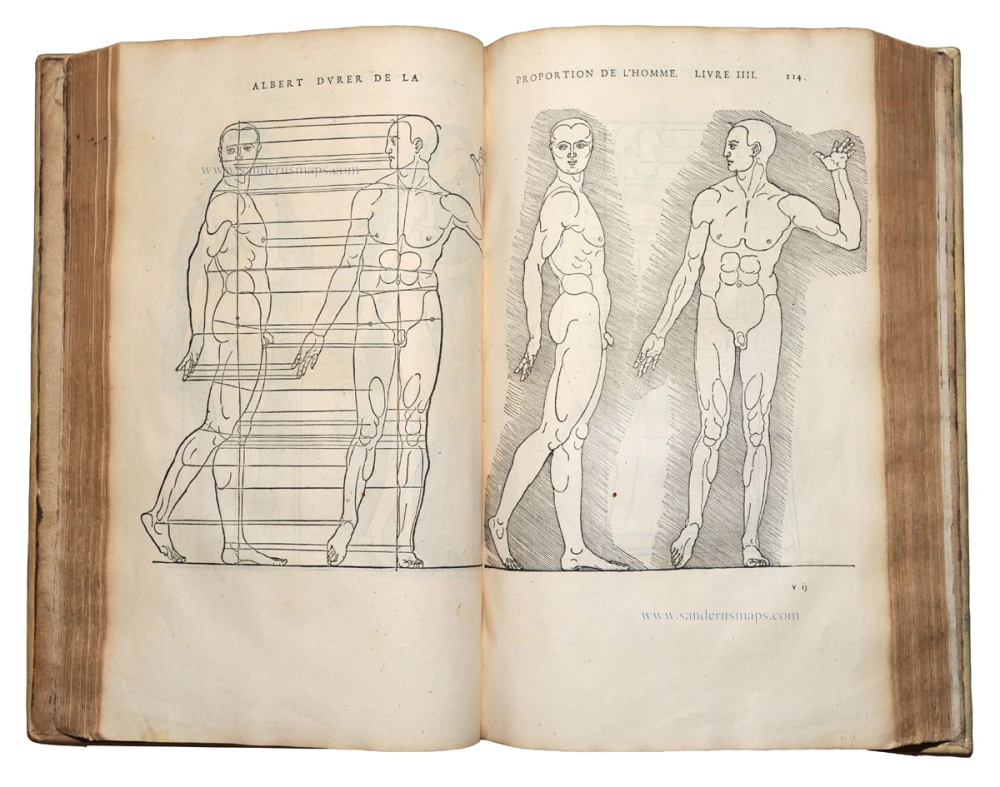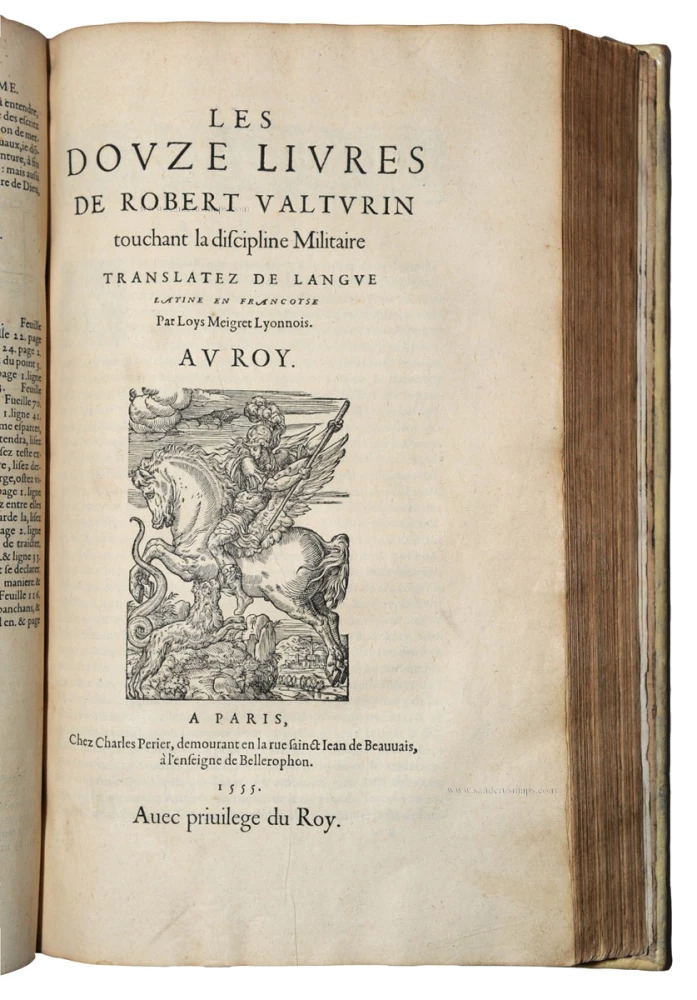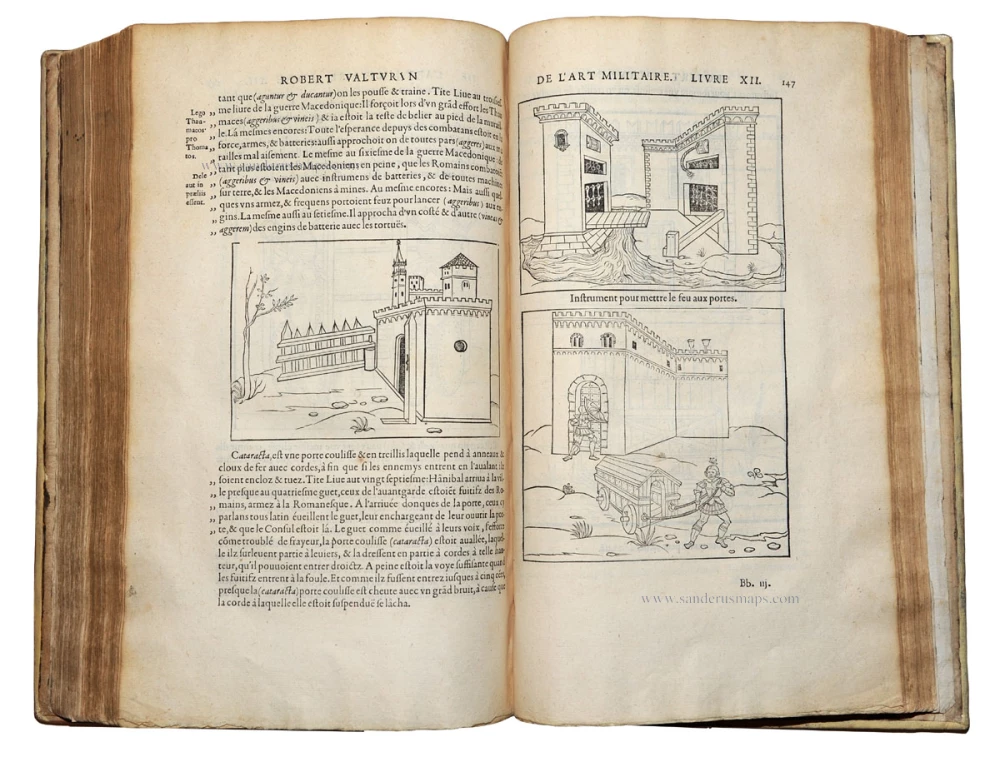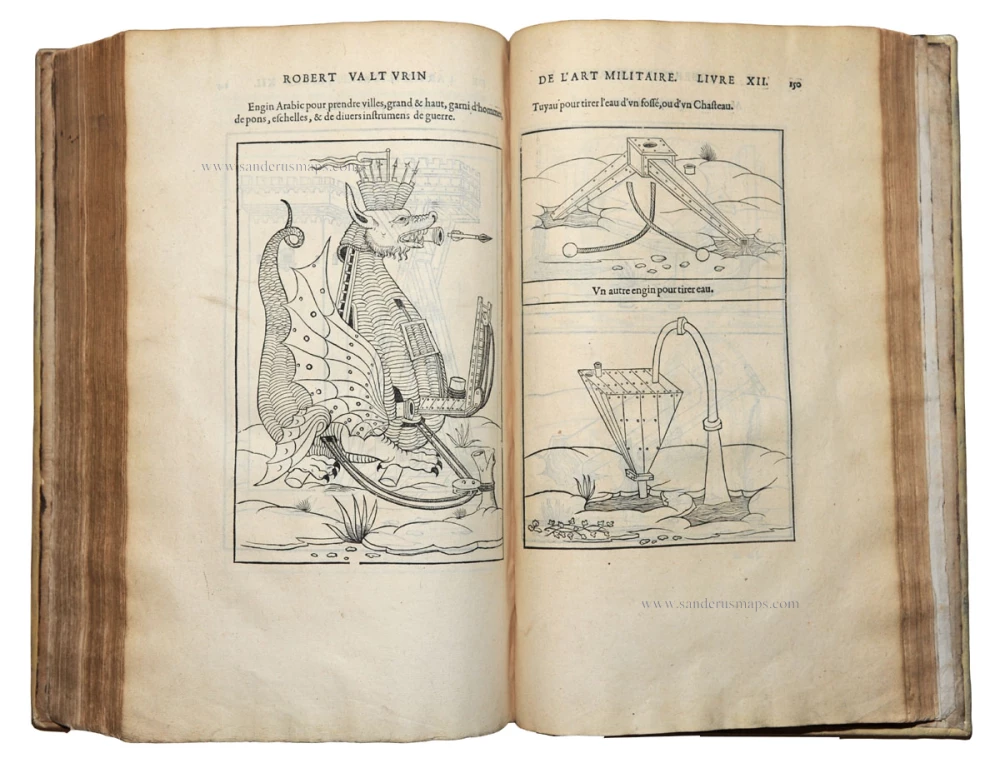Les quatre livres d'Albert Dürer. 1557. 1664
LES QUATRE LIVRES D'ALBERT DURER, Peinctre & Geometrien Tres excellent, De la Proportion des parties & pourtraicts des corps humains. Traduicts par Loys Meigret Lionnois, de langue Latine en Françoise.
Item Number: 23189 Authenticity Guarantee
Category: Books > Miscellany
[Dürer:] Brunet, II.914; Mortimer French, 186; Fairfax Murray French, 137; Not in Rothschild.
First edition of the French translation by Louis Meigret, based on the Latin edition by Joachim Camerarius. (originally published in German, Vier Bücher von Menschlicher Proportion, 1528.)
The first book was mainly composed by 1512/13 and completed by 1523, showing five differently constructed types of both male and female figures, all parts of the body expressed in fractions of the total height. Dürer based these constructions on both Vitruvius and empirical observations of, "two to three hundred living persons," in his own words. The second book includes eight further types, broken down not into fractions but an Albertian system, which Dürer probably learned from Francesco di Giorgio's De harmonica mundi totius of 1525. In the third book, Dürer gives principles by which the proportions of the figures can be modified, including the mathematical simulation of convex and concave mirrors; here Dürer also deals with human physiognomy. The fourth book is devoted to the theory of movement.
This book was not only a hallmark in the art world, it also laid the basic foundations of descriptive geometry. "Dürer's final masterpiece was his Treatise on proportion which was at the proof stage at the time of his death (1528). Descriptive geometry originated with Dürer in this work although it was only put on a sound mathematical basis in later work of Monge. One of the methods of overcoming the problems of projection, and describing the movement of bodies in space, is descriptive geometry. Dürer's remarkable achievement was through applying mathematics to art, he developed such fundamentally new and important ideas within mathematics itself." (J.J. O'Conner)
[Valturio:] Cockle, 50; Fairfax Murray French, 561
The 96 woodcuts are copied from the 2nd edition (1583 - first edition Verona, 1472), " ... said to be from da Vinci's drawings. They represent the machines of war used by the ancients, with medieval modifications, and are remarkably quaint and instructive. As Promis remarks, the work is, for those times, a prodigy of erudition, and was deservedly held in high estimation. The materials are derived from the ancient military writers, with whose works Valtur was well acquainted." (Cockle)

